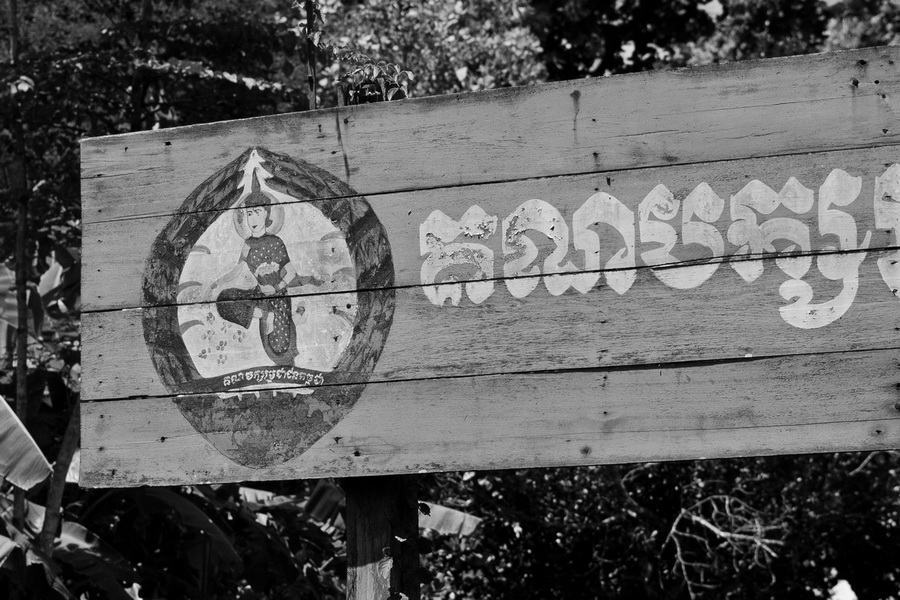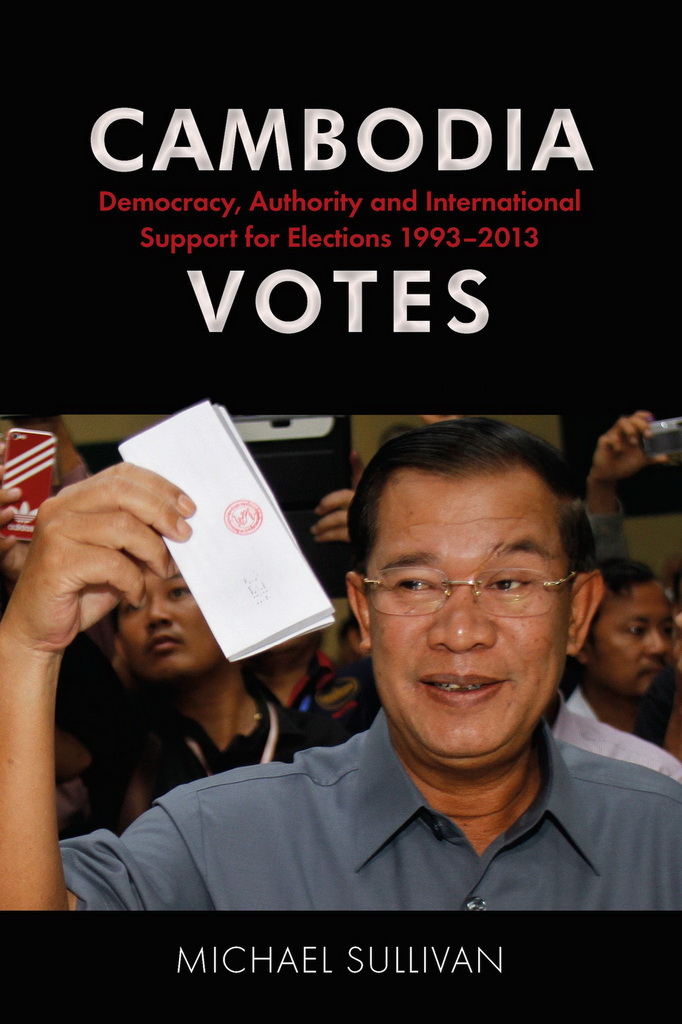
The late historian Benedict Anderson once reflected that voting was a peculiar form of political action. On a particular day, he wrote, “one joins a queue of people whom one does not typically know, to take a turn to enter a solitary space, where one pulls levers or marks pieces of paper, and then leaves the site with the same calm discretion with which one enters it.” This is, he reflected, “almost the polar opposite of all other forms of personal political participation.”
As a result, elections tend to have a Janus-faced quality: both “the expectation that elections will have real policy outcomes satisfactory to substantial sections of the voting population”; and the “pacification and the tendency toward the delegitimation of a vast range of popular practices.”
This is true in many places, but especially so in Cambodia, a country where elections have been tightly stage-managed by Prime Minister Hun Sen and his Cambodian People’s Party, yet have somehow never become entirely meaningless. While the CPP has won every election since 1998, each has been accompanied by a period of upheaval and negotiation in which opposition forces have done their best to press for political change. This was particularly visible at the 2013 election, when the opposition Cambodia National Rescue Party (CNRP) was buoyed by an extraordinary surge of public support that slashed the CPP’s majority in the 123-seat National Assembly from ninety seats to just sixty-eight.
The election was followed by a year-long deadlock between the two parties, when the CNRP held colourful street protests against alleged voter fraud and other manipulations. While the CPP escaped with a narrow, albeit contested, victory, commune elections this June, and national polls in mid-2018, loom as serious — possibly existential — challenges for the party.
As Michael Sullivan writes in Cambodia Votes, a comprehensive and highly readable account of the country’s elections since 1993, “internationally supported elections in Cambodia have been the central mechanism though which Hun Sen and the CPP have legitimised, maintained, and reproduced their authoritarian grip on political-economic power. At the same time, elections have been the principal instrument through which political and civil opposition have persistently struggled to challenge Hun Sen’s system of governance.”
Sullivan, a former director of the Centre for Khmer Studies in Siem Reap, traces Cambodia’s current electoral system to its origins in the 1991 Paris Peace Agreements, which sought to end the civil war that had raged between the CPP and three resistance factions since the overthrow of the Khmer Rouge regime in 1979. The treaty created the UN Transitional Authority in Cambodia, or UNTAC, a $2 billion peacekeeping operation tasked with disarming the factions, repatriating refugees and holding multiparty elections in which the CPP and its wartime enemies would duke it out via a free and fair process.
 That was the theory, but there were some obvious problems with the practice. For one thing, the Paris Agreements were “foisted upon the Cambodian factions by powerful outside forces who had very little or no understanding of Cambodian social and political realities.” They therefore had very little buy-in from the factions, whose political aims remained incompatible and unresolved. Of the four, the CPP enjoyed the greatest advantages, and also had the most to lose. The party had been in control of the majority of Cambodia since 1979; it had the largest armed force, and, as UNTAC approached, had privatised the state-run economy and placed it in friendly hands. In Hun Sen, it also had the most skillful Cambodian politician since Prince Norodom Sihanouk: a wily survivor with a fine-grained understanding of the various ways power could be mustered, manipulated and employed to shape political reality.
That was the theory, but there were some obvious problems with the practice. For one thing, the Paris Agreements were “foisted upon the Cambodian factions by powerful outside forces who had very little or no understanding of Cambodian social and political realities.” They therefore had very little buy-in from the factions, whose political aims remained incompatible and unresolved. Of the four, the CPP enjoyed the greatest advantages, and also had the most to lose. The party had been in control of the majority of Cambodia since 1979; it had the largest armed force, and, as UNTAC approached, had privatised the state-run economy and placed it in friendly hands. In Hun Sen, it also had the most skillful Cambodian politician since Prince Norodom Sihanouk: a wily survivor with a fine-grained understanding of the various ways power could be mustered, manipulated and employed to shape political reality.
In inauspicious conditions, the best hope for democracy came from the Cambodian people, who turned out in large numbers to vote in 1993 and handed the CPP a stinging defeat. It was a remarkable repudiation of the campaign of violence and intimidation that the party had waged in a bid to swing the result its way, and as Sullivan notes, a testament to UNTAC’s success in disseminating information about the electoral process. But instead of accepting its loss to Funcinpec, a royalist party led by Prince Norodom Ranariddh, Hun Sen and the CPP claimed voter fraud, threatened a secession of the country’s eastern provinces and thereby blustered their way into a coalition in which Hun Sen served as “second prime minister” to Ranariddh’s “first”.
The struggle for power continued, and in July 1997, Hun Sen’s forces launched a violent coup de force against Ranariddh’s power base and seized de facto power. Seriously flawed elections in 1998, backed by most foreign aid donors, eager for a face-saving “return to democracy”, would merely formalise the CPP’s control.
Since then, as Hun Sen has consolidated its power, his government has used the existence of elections to domesticate opposition forces and confine political action to a narrow window around election time, using violence and legal harassment to foreclose any extra-electoral alternative offered by labour unions or community activists. National elections in 2003 and 2008, and commune elections in 2002 and 2007, showed democracy in its tamed, shadow phase. As Sullivan documents in detail, each ultimately resulted in CPP victories, though they were all accompanied by strong evidence of intimidation, violence, killings and the misuse of state resources.
Some persisted in the belief that, with enough technical tweaks, it would somehow all come good: that setting up a perfected electoral system would eventually transform Cambodian political life from a highly personalised system of patrimonial governance rooted in Khmer social hierarchies into one approximating that of Denmark.
Cambodia Votes also provides an unparalleled account of the history of international support for the country’s elections and the complex dynamics that arose between the Cambodian government and donors like the UN Development Programme and the European Union. Despite the plain evidence that the CPP had little interest in elections in which its own victory wasn’t assured, Sullivan explains how donors continually stamped their approval on elections that were “free and fair enough” to satisfy technical criteria, but otherwise deeply flawed.
Why donors didn’t take more of a stand is an interesting question. On one level, it is surely the case that having made a billion-dollar investment in Cambodian democracy, they were loath to admit its failure. It’s also the case that the UN and foreign governments had become enmeshed in their own Sisyphean terms of reference: they wanted credit for bringing democracy to Cambodia — probably an impossible aim in the circumstances — but were not willing to pay any real political price for doing so. To square the circle, some persisted in the belief that, with enough technical tweaks, it would somehow all come good: that setting up a perfected electoral system would eventually transform Cambodian political life from a highly personalised system of patrimonial governance rooted in Khmer social hierarchies into one approximating that of Denmark. Others simply made the pragmatic decision to prioritise political stability under Hun Sen over the uncertainties of open democratic competition. It was only by the time of the CPP’s landslide victory in the 2008 election, Sullivan writes, that donors could admit that “no matter how technically and legally sound the system was, there was no political will to ensure it functioned in an independent and impartial manner.”
Could things have gone otherwise? Sullivan writes that technical interventions were insufficient to move Cambodia in a democratic direction, but it’s less than clear what might have succeeded in its place. The author is critical of foreign donors not just for their hypocritical accommodations, but also on the implied assumption that there was an alternative path — one that would have prevented Cambodia from slipping into authoritarianism. Unfortunately, it’s hard to see what foreign governments could have done to remould fundamentally the authoritarian mindset of Cambodia’s political class. The experience of the past two decades suggests that outside pressure would in the long run have produced, not more democracy, but simply more theatre and more elaborate contrivances of “adherence” to democratic norms.
The only real alternative was for donors to withdraw support altogether; but continuing international engagement, however mendacious, is one reason why Cambodia’s elections still retain some meaning. The CPP government’s reliance on Western aid and legitimacy means that it has been forced to hold regular elections that are at least minimally free, and to do so in the full glare of international scrutiny. And no matter how much Hun Sen and the CPP control at election time, Sullivan points out that “there are limits to how far they can go in manipulating the outcomes”: they can never prevent a repressive social and political system from being “on display” to an increasingly sceptical public.
As demonstrated by the protests that followed the 2013 election, to which he devotes a detailed chapter, Cambodian elections remain crucial sites of political contestation that have held out at least “the possibility of positive social and political change.” Of course, Janus looks both ways. If elections in Cambodia have opened up political opportunity, they have also chimed with Hun Sen’s desire to tame political action and confine it to a narrow terrain.
One notable omission from Sullivan’s analysis is the rise of Chinese influence in Cambodia, which has displaced the UNTAC settlement and given the CPP an escape valve from Western pressure to enact democratic reforms. At future elections, this could well embolden Hun Sen to employ greater levels of force to maintain his hold on power. Another possibility is that being forced to hold elections might continue to benefit the CPP, by giving it feedback about public sentiment that enables life-saving changes to a broken system.
Whether the 2018 election will bring sun or shadow, of course, is impossible to predict. As Sullivan writes, it will ultimately come down to the sentiment of the Cambodian people, and whether a sclerotic CPP is able to satisfy the needs of a young, increasingly restive population. If not, it might find politics spilling from the voting booth once again into the streets — where true political change so often happens.
Published in The Mekong Review, February-April 2017



